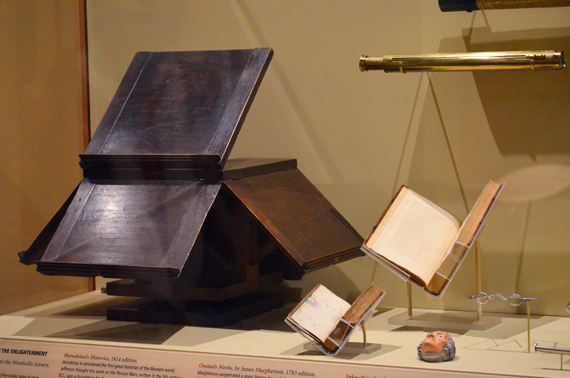
Legend
has it that Thomas Jefferson designed this bookstand in 1810
and had one built out of Walnut.
Thomas Jefferson was a lifelong reader and learner who
by 1814 had accumulated over 6000 books. Included in his
library was a woodworking book by André Roubo entitled L'Art du Menuisier (The
Art of the Carpenter).
In that book is a description of a folding
two-sided music stand with a ratcheting mechanism to
allow for angle adjustment.
It is believed that Roubo’s book inspired Thomas
Jefferson’s design. While
Thomas Jefferson was himself a woodworker with a small
workshop located on the second floor of his home in
Monticello, in all likelihood, he had some other skilled
craftsman build his bookstand
Interestingly,
after the British burned the Library of Congress in 1814,
Thomas Jefferson sold his entire collection of books to the
Library of Congress to help them rebuild the library’s
collection. Perhaps
more importantly, Jefferson used the money he received from
this sale to rid himself of debt! So Thomas
Jefferson’s personal library has, in effect, seeded today’s
massive Library of Congress.
You can still find Jefferson’s copy of L’Art du Menuisier
at the Jefferson reading room at the Library of Congress.
| Rev.
Dr. William A. Lewis (Left) being presented the
Jeffersonian book stand by maker Larry Ciesla.
Reverand Lewis is the Senior Pastor at the Community Presybeterian
Church in Celebration Florida. |
An example of the bookstand as it may
actually be used. The bookstand supports up to five
books on a rotating base allowing the user to easily move
from one open book to another. |
 |
|
| This picture is taken from the Smithsonian
Web Site showing the original Jeffersonian bookstand on
display. |
My replica is the same dimensions, made
from Walnut as the original, but with a marquetry image on
the top stand. |